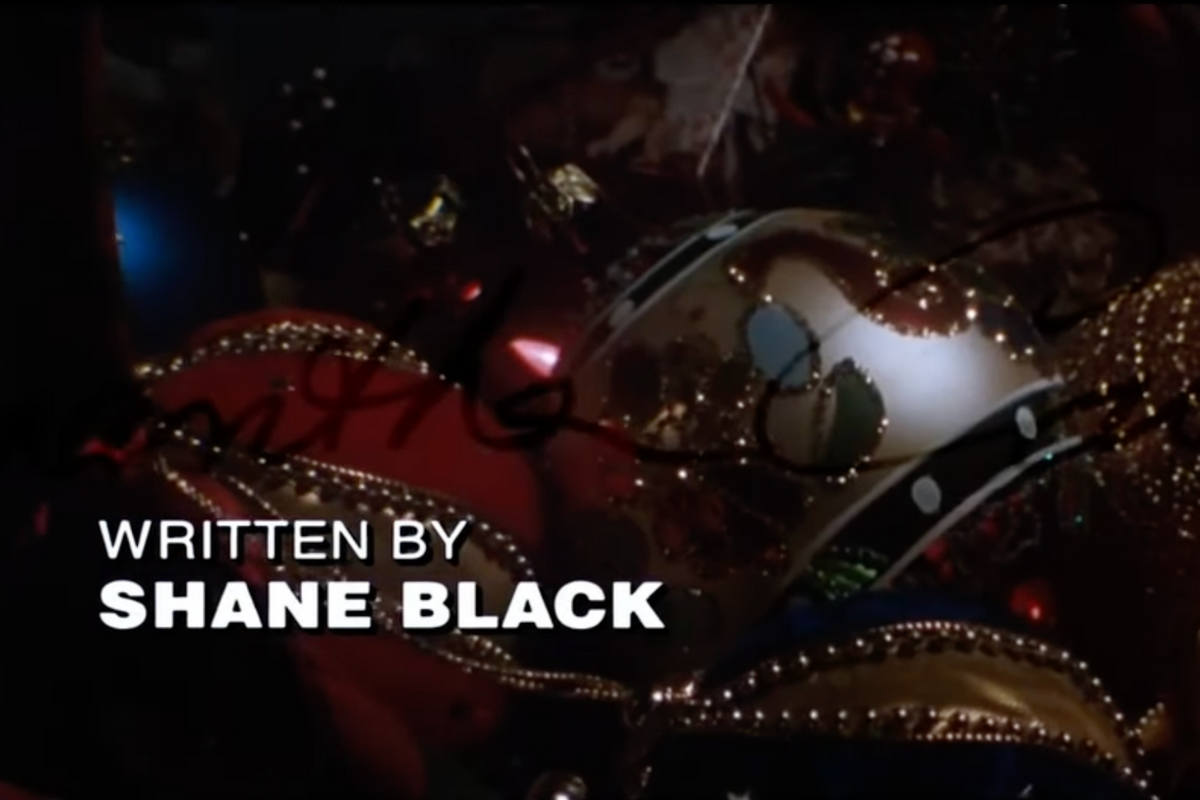BREAKING & ENTERING: Loglines and Tigers and Bears – Oh My!
Barri Evins vanquishes logline fears with the secrets to crafting loglines that stand up to industry scrutiny and entices people to read your story.
Barri Evins vanquishes logline fears with the secrets to crafting loglines that stand up to industry scrutiny and entices people to read your story.
A producer who’s sold to all the majors, Barri Evins created Big Ideas to give aspiring screenwriters what it takes to break into the business by sharing methods she uses with professional writers. Sign up for Barri’s newsletter and follow her on Twitter @BigBigIdeas.
Over the course of my career as an executive and as a producer, I have read a considerable amount of loglines. I did my share of logline consults last year, as well as offering my free Logline Thumbs Up or Thumbs Down through my website. I’ve written about loglines in the past here, in I Want to Taste Your Logline and I Want To Taste Your Logline 2 – Still Hungry, hoping to offer some words of wisdom on conquering this troublesome handful of words. Many of my colleagues have been eloquent and inspiring on the subject of loglines.
While I acknowledge that this single sentence is the source of much pain, anxiety, and frustration for writers of all levels of experience, I still find myself surprised that the little logline is still the Big Bad Wolf when it comes to causing writers trouble. It vexes, it perplexes, and causes many a writer to quake in their boots.
The need for a solid logline is not limited to just screenwriters, but to anyone who needs to pitch their work. Whether to gain the attention of an agent or manager, publisher, producer or executive, in hopes of moving it forward and getting it out into the world. I’m going to assume that is the reason you embarked on this long, arduous journey through the scary writing forest in the first place – because you have a story that you truly want to tell and you really want people to hear it.
The logline is an integral part of giving birth to your story. So breathe, breathe, breathe, and let’s push forward.
A Very Scary Story
You’ve finished your screenplay or novel and now you’ve set off in search of a logline. You are lost in the forest. You are alone. It’s getting dark. You’re not sure of the path forward or the way back home. Eek! What’s that lurking in the shadows?
It’s your deepest fear.
Or it should be.
That you have embarked on the arduous and lengthy voyage of writing a story without a clear conclusion in mind. You may have reached a destination, but now you are not truly sure where you are.
I would feel quite confident placing a large wager that the least successful loglines I see are projects that did not start with crafting a logline first.
This is summed up by the inability to offer a cogent and concise response when asked, “What’s your story about?”
“Well, there’s these two guys, see, and they um, accidentally tick off some big bad guys and then go on the run and the bad guys follow them… and then… and then… hijinks ensue.”
“A twenty-four year old woman has to confront darkness from her past.”
“After being gone for twelve years, a stylishly dressed woman returns to her home town of Starry Hollows, uncovering a long-hidden secret.”
No, no, no!
None of these approach being successful when it comes to conveying what a story is about. Instead they painfully clarify that the writers have put solidifying the central concept on the back burner rather than at the top of their To Do List when setting out to tell their stories. Oh, the horror! It is simply back asswards.
While a logline may evolve over the course of the writing process, being honed, revised and even drastically reworked – and might well benefit from undergoing that process – beginning without a logline is reckless and foolhardy. In the end, there you are: Stuck in a pot of boiling water.
Loglines are a fundamental writing skill. They may differ from other writing skills, like creating nifty dialogue, producing rich, yet lean description, or crafting precise structure, but they deserve just as much of your time, attention, and desire to learn about and master that skill as any element of the craft. I have a nifty, not too formulaic formula for crafting your logline here and advice on avoiding logline disasters here.
It might be easy to poo-poo loglines as “mere marketing,” but that would be a fatal flaw. The skill of writing a logline shouldn’t play second fiddle to any of your efforts to become an adept and successful writer, as it could land you in hot water.
Should you fail to respect the power of the logline as an effective organizing force of storytelling, well, you deserve cold porridge. By ignoring it, you might find yourself being eaten by the Big Bad Wolf.
No scary story would be complete without a creepy cliffhanger. That dark and foreboding note which hints that the monster may not be dead, all is not right with the world, and umm, what’s that lurking in the shadows? So here it is:
The least successful, most challenging loglines to rewrite and improve are a red flag of a serious, potentially fatal problem with the story. It’s not the logline that is in need of repair. It’s the story that is defective down to its foundation. Rather than reworking a single sentence, the writer is faced with ripping limb from limb a much beloved tale, hoping that it will survive. Now that’s horrifying!
Developing a logline from the outset brings clarity and focus to your writing journey. It defines your path, ensures you reach your desired destination, and provides an invaluable tool in the end, when it comes time to bring your story into the world.
Goldilocks And The Three Loglines
After her long walk through the forest, poor Goldilocks tried out a boatload of porridge, as well as a lot of beds, struggling through too much and too little, before getting to “just right.”
When it comes to loglines, how can you tell what will be “just right” for your reader?
Too Little – The Logline Built of Straw
Ah, the itsy bitsy logline. How I hope to never encounter this one again! I’ve tried to free writers from this pervasive, patently false, and hugely counterproductive myth, by spelling it out in The Logline Dilemma – Does Word Count Count?
The short answer? No.
Loglines are not rigorously judged by the number of their words, but by the power of their words to convey the essential elements of the story so we know WHAT IT IS ABOUT!
The itsy bitsy logline fails on this count. This slim sentence is vague. It falls short of informing us of what we need to know in order to decide if we want to read your story. Who is the hero? What is the conflict? Why do we care? It doesn’t accomplish Job Number One.
Some writers are under the impression that providing less will pique the reader’s curiosity.
"Golly gee, I wonder what happens? Guess I’ll drop everything and devote a huge chunk of my time and energy to reading a hundred plus pages to find out."
Wrong, wrong, wrong. The mysterious doesn’t work in a logline.
Good storypiques our interest.
Period.
If we can’t determine that from of your logline, it’s a fail.
Its slimness will more likely work against you than in your favor. Less is not more!
Rather than being impressed with its brevity, it is far more likely to convince a pro that you cannot write.
Yes, really.
Poof!
Your house has been swiftly knocked flat. Gone.
Thanks for helping us make that decision so quickly! Next!
Too Much – The Logline Built of Sticks
I don’t see “too much” too much, especially since the aforementioned senseless internet rumor about the word count of loglines brought a wave of itsy bitsy loglines to my inbox for feedback.
But when I do come across “too much,” the Logline Built of Sticks often has lots of parts, but those elements give me information that I either do not need, or supply information that falls short of actually communicating to the reader. The pieces fail to come together to form a solid logline.
In this category, I include the use of characters’ proper names unless they are internationally renowned real figures. For instance, I wouldn’t expect you to start a logline with “The 37th President of the United States of America…” when “Richard Nixon” would be leaner and far more effective. However, if you are not writing about a well known historical or broadly renowned cultural figure, we really, truly do not need to know the proper name of your main character. Resist the urge, no matter how clever or story-enhancing you feel your choice might be; say, “Goldy Loxs.”
Similarly, if location matters, why it matters is more significant than the proper name. “Shawshank Prison,” which certainly comes close to being a character in its own right in the film The Shawshank Redemption, doesn’t communicate to your reader. Just as “Amity,” in a logline for Jaws, wouldn’t convey the significant role that the setting plays in the story.
Choices that use rich adjectives to convey the importance of the setting, as well as the role it plays in the story, are the most powerful.
“a notoriously harsh prison from which no one has ever escaped”
“a corrupt prison”
“a remote beach community”
“a quiet beach community”
Word count be damned.
Here’s my big beef with the Logline Built of Sticks: There is much to say about the hero, but writers often fail to focus on the characteristics of the hero that relate directly to the conflict, arc and therefore, the theme, as these elements are all interconnected in good story. Too often the Logline Built of Sticks has a bunch of information about the hero that doesn’t tie into the core of the story and tell us what is essential to understanding the story.
This requires that you first know and understand these essential elements yourself. It requires some deep thinking to acquire real knowledge of your story, the point in telling it, and why people will want to hear it.
As I used to tell my graduate students, we don’t need to know that the hero is 6’2” unless it is a murder mystery and the crime could only have been committed by someone stabbing downward from a great height.
Note: Exact age is only important if it is significant to the core story. For instance, a woman about to turn thirty and desperate to keep up with her married friends. However, when the main character is a kid, age is highly significant. Tween, teen, toddler, are specific enough to be informative, but remember, the difference between being five-years-old and fifteen is 100 when it comes to understanding characters.
What is relevant can vary from story to story, but the litmus test is to focus on the big picture and support that with every word of your logline.
Just Right – The Logline Built of Bricks
What makes this logline so strong that it can withstand all the huffing and puffing and protect the little piggies?
It is the solid bricks that build all strong stories.
This logline takes time, effort, and considerable rewriting. Not to mention having a thesaurus on hand so you can choose the exact word that best conveys what you mean, down to the subtlest of connotations. The richly descriptive adjectives that illuminate character and dynamic verbs that convey conflict are the solid bricks needed to construct a logline that will stand up to the winds of rejection, convincing us that you have a solid, compelling story.
I generally list character first, because it is the hero who has the power to draw us into stories. It can be a powerful starting point for a logline, although I have discussed situations where the inciting incident is the true star that might overshadow the main character here.
Think carefully about the single word or two available to describe your hero. Choose carefully. These may be the most crucial words in our troublesome sentence. What do we need to know about your hero that is essential to understanding them? What characteristic of your hero defines them?
Look to their flaw, not their cufflinks.
Is your hero obnoxiously self-centered, rich and ruthless, a lonely ten-year-old? You get one or two adjectives to convey who your main character is. Those words must relate directly to their core characteristic – their flaw, which indicates how they will change over the course of the story. Whether they turn out to be Bill Murray’s character in Groundhog Day, Richard Gere from Pretty Woman, or young Elliot in E.T. The Extra-Terrestrial.
Spelling out the conflict is essential to our being able to envision how the story plays out. “Chaos ensues” is a pithy phrase, but not very informative. Conflict drives story. Conveying engaging, escalating conflict with solid bricks is essential to convincing us you have a story worth reading.
Goal and stakes round out a hero. What their problem is and why it matters if they overcome it or not. This is how the reader becomes invested and why we stick around.
The tone, the tone, the tone.
I suspect I’ve used those words to such a great extent with students and mentees that – depending on who gets to decide – they may well be inscribed on my tombstone. And I’m okay with that. Because I’ll still be getting the importance of defining the tone out into the world, without the effort of having to say it time and again.
On the iconic sitcom, The Dick Van Dyke Show, created by the legendary Carl Reiner, Morey Amsterdam’s character, Buddy, has a wife nicknamed “Pickles.” Though seldom seen on the show, she was the subject of many jokes. Why was she called “Pickles”?
Because “pickles” is a funny word. Try saying it aloud a few times and see if the corners of your mouth don't turn upward in a smile.
So yes, word choice matters. You should be offering rich adjectives and active verbs that underscore the tone of your story.
Taming Loglines
I may be able to mix and match a couple of fairytales here – all in the service of making one point – but you, dear writer, may ultimately tell only one story at a time.
The strong logline conveys character, conflict, stakes, and tone. The ultimate version would hint at the theme as well – the true heart of the story from which it derives its strength. This Über Logline takes your work to the next level and makes it stand out from the crowd.
“A cover-up spanning four U.S. Presidents forces the country's first female newspaper publisher and a hard-driving editor to risk the future of their publication to expose shocking secrets in an unprecedented battle between journalism and government.”
That well-crafted logline for The Post is based on a true story, but doesn’t name real life characters Kay Graham or Ben Bradlee. The focus is on the seminal characteristic of each of the two main characters, what drives them and thereby shapes their conflict. It’s an Über Logline. With relatively few succinct and evocative words it tackles a complex historical story, gives it context and scope, makes it clear what the conflict is and implies that it will escalate, conveys that the stakes are high, and hints at the message of the movie.
There’s your goal. Here’s how to achieve it:
Know what your story is about at its heart.
Be certain of who your characters are.
Always start your work with a logline, even though it may evolve and change over the course of your writing.
Make sure your logline is built of bricks that convey the essential elements of story.
That’s how you wind up with a happy ending.
Let’s talk loglines together! Visit my website to get free logline feedback, or choose a comprehensive, interactive Logline Consultation.
Get more tips from Barri Evins with her on-demand webinar
Loglines, Queries & Synopses:
How to Take Your Script from Being Ignored to Getting Noticed!
Barri Evins draws on decades of industry experience to give writers practical advice on elevating their craft and advancing their career. Her next SCREENWRITING ELEVATED online seminar with 7 monthly sessions plus mentorship will be announced in 2025. Breaking & Entering is peppered with real life anecdotes – good, bad, and hilarious – as stories are the greatest teacher. A working film producer and longtime industry executive, culminating in President of Production for Debra Hill, Barri developed, packaged, and sold projects to Warners, Universal, Disney, Nickelodeon, New Line, and HBO. Known for her keen eye for up and coming talent and spotting engaging ideas that became successful stories, Barri also worked extensively with A-List writers and directors. As a writer, she co-wrote a treatment sold in a preemptive six-figure deal to Warners, and a Fox Family project. As a teacher and consultant, Barri enables writers to achieve their vision for their stories and succeed in getting industry attention through innovative seminars, interactive consultations, and empowering mentorship. Follow her on Facebook or join her newsletter. Explore her Big Ideas website, to find out about consultations and seminars. And check out her blog, which includes the wit and wisdom of her pal, Dr. Paige Turner. See Barri in action on YouTube. Instagram: @bigbigideas X: @bigbigideas







